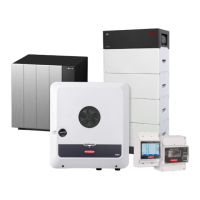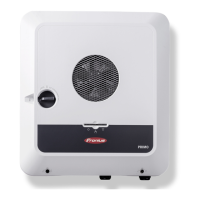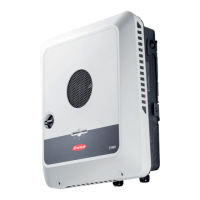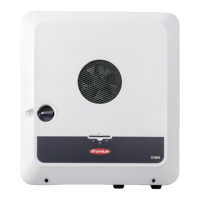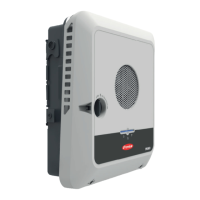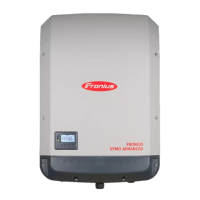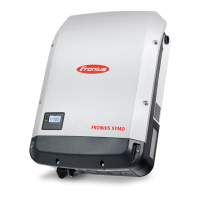The inverter must not be installed or used at altitudes above
4000 m.
Do not install the inverter in:
-
Areas where it may be exposed to ammonia, corrosive
gases, acids or salts (e.g. fertiliser storage areas, vent open-
ings for livestock stables, chemical plants, tanneries, etc.)
During certain operating phases the inverter may produce a
slight noise. For this reason it should not be installed in an occu-
pied living area.
Do not install the inverter in:
-
Areas where there is an increased risk of accidents from
farm animals (horses, cattle, sheep, pigs, etc.)
-
Stables or adjoining areas
-
Storage areas for hay, straw, chaff, animal feed, fertilizers,
etc.
The inverter is designed to be dustproof (IP 66). In areas of high
dust accumulation, dust deposits may collect on the cooling
surfaces, and thus impair the thermal performance. Regular
cleaning is required in this case, see chapter Operation in dusty
environments on page 139. We therefore recommend not in-
stalling the device in areas and environments with high dust ac-
cumulation.
Do not install the inverter in:
-
Greenhouses
-
Storage or processing areas for fruit, vegetables or viticul-
ture products
-
Areas used in the preparation of grain, green fodder or an-
imal feeds
Choosing the
location of third-
party batteries
IMPORTANT!
Refer to the manufacturer's documents for the suitable location for third-party
batteries.
Installation posi-
tion of inverter
The inverter is suitable for vertical installation on a vertical wall
or column.
44
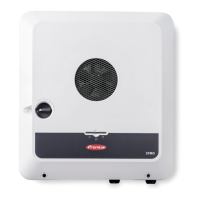
